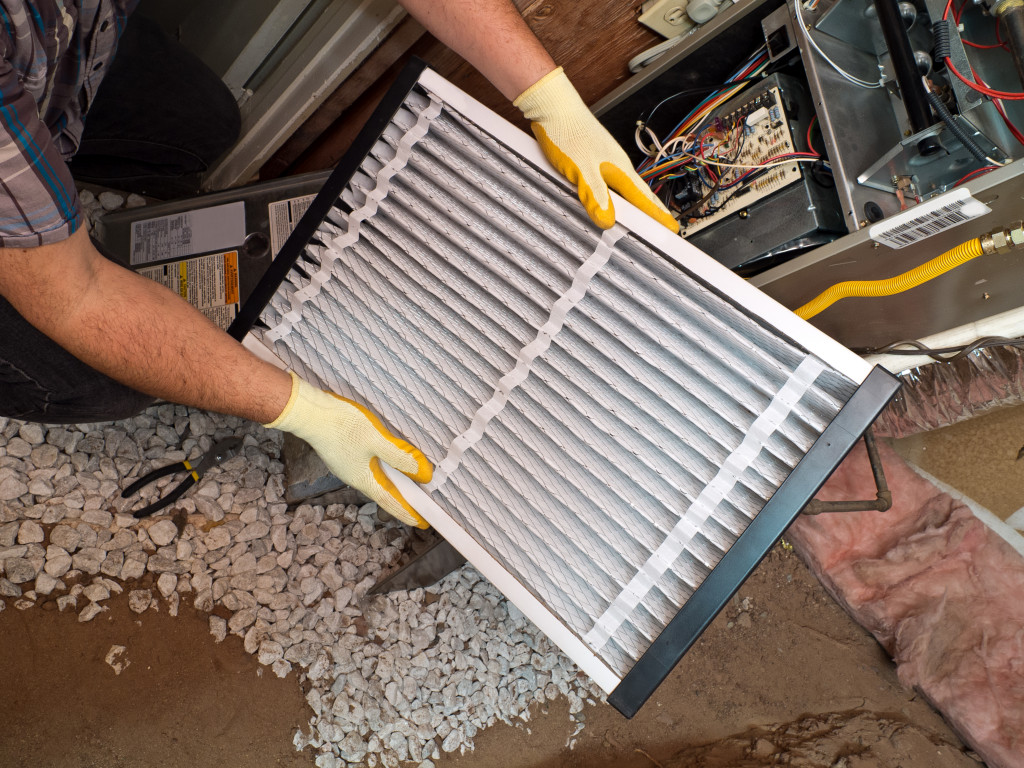There’s not a lot of things to do during the winter, but there are a lot of things to fix in your home before, during, and after the winter. Some homes just aren’t built to withstand the kind of winter seasons we’ve been having nowadays. That also doesn’t mean that there aren’t ways we can prepare for the kind of winters we’ve been having.
Well-maintained gutters and downspouts have been great in getting water where it shouldn’t be—away from your roof and other parts of your home. The function of gutters shouldn’t be taken away from the function of your roof. It’s sloped for a reason. It’s usually designed to take away water, which becomes snow or snow that’s turned into the water away from the top of your home.
If you don’t want to repair your gutter during the cold of winter—which is very unpleasant—take a look at these tips to do preventive maintenance on your roof.
Unclutter Your Gutters
During the year, there might have been a lot of events that piled up the debris in your gutter. This task may prove to be the most cumbersome, but it’s also the centerpiece of your work. You’ll know that the waterway is clogged during the rainy season when there’s dripping or overflowing of water and during winter, where some icicles may form.
Remember to check the corners of your waterways. These areas are likely to have lots of debris that may even have formed a dam. If you want to remove this inconvenience, a gutter cover might come in handy in keeping that debris away.
Gaps and Spaces Should Be Clear
Make sure there aren’t leaks in your gutter. You should also check if the gutter is still good; if it’s still attached to your home, that’s okay, but a storm may have unhinged parts of it if it’s not in good shape anymore. You should replace it if it’s in this condition.
Even if it looks good structurally, but there are gaps and missing pieces, you should make repairs as needed. Don’t wait for it to become the source of a much bigger and harder-to-fix problem.

Make Sure the Structure is Sound
You should usually know when your gutter isn’t okay anymore by examining every piece of your gutter—the siding and foundations are especially prone to staining, not to mention water-related damage like rust and other problems. If it’s too evident already, you should consider making repairs.
The repairs to the structure shouldn’t be made during winter. It’s before it, or even before the rainy weather. You wouldn’t want your pathways to flood because you have wide gaps in your waterways. Make repairs as soon as you can to prevent this scenario from happening.
Find Out Where the Wet is Coming From
This could happen to your home if you’ve got faulty gutters. When you see wet marks on your walls, you should immediately check where it’s coming from. Water damage like this could cause other problems which become expensive over time. You could get mold and mildew in your home, which could cost many health problems and larger bills to pay.
If there’s a hint of a damp, wet area, check to make sure it’s not coming from somewhere in your home. If there are no burst pipes or bricks that have become porous, it’s usually a broken gutter or a clogged waterway. Again, have it repaired before the wet seasons.
Stop It from Coming Back Again
The two main reasons the wet areas in your home are happening are moisture from outside or moisture inside not being able to escape. If you want to make sure the water escapes your home, change your ventilation regularly. Open windows even slightly during winter to let the moisture escape and shut them before it gets too uncomfortably cold.
If your gutter is the problem, you should check if you’ve been doing regular home maintenance. An ounce of prevention is always better, as the saying goes. It’s also one way of preserving the structure of your home. Water tends to eat away at the gutter if it’s left unattended to, and there’s the danger of it falling on unsuspecting persons.
There are many other ways to make sure that the cold doesn’t permeate your home or destroy your gutter. Check it regularly for signs of damage and always jump on the problem at the first sign of it. That’s how you know you won’t be dealing with gutter damage and waterway problems for a long time.
